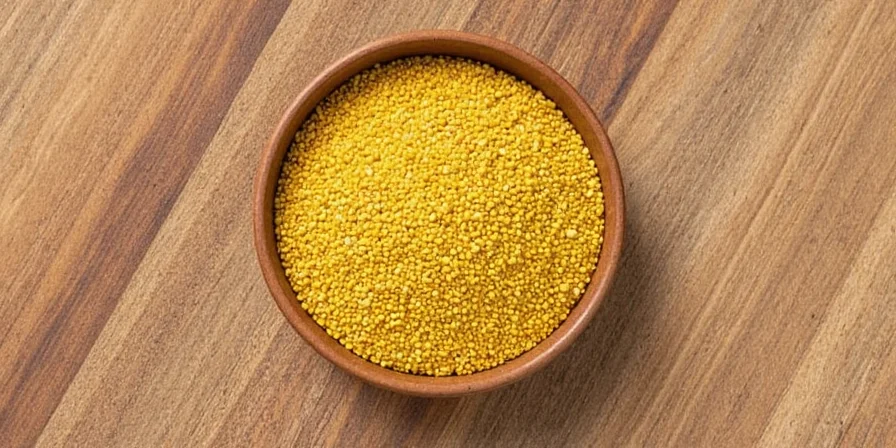
Fig. 1: Yellow, brown, and black mustard seeds show distinct color differences affecting flavor intensity.
Yellow, brown, and black mustard seeds differ primarily in heat level and flavor profile: yellow seeds are mildest (pH 6.0-7.5), brown seeds medium-hot (Scoville 2,500-5,000), and black seeds hottest (Scoville 5,000-7,000). This scientific comparison reveals precise culinary applications for each variety based on chemical composition and global cooking traditions.
Mustard Seed Comparison: Critical Differences at a Glance
When comparing mustard seed varieties, three key factors determine their culinary applications: pungency level (measured by allyl isothiocyanate concentration), optimal cooking methods, and regional usage patterns. Understanding these differences helps home chefs select the right seed for specific recipes.
| Type | Heat Level (Scoville) | Optimal Preparation Method | Flavor Development Time | Best Recipe Applications |
|---|---|---|---|---|
| Yellow (White) Mustard | Low (800-1,200) | Soak in vinegar 24 hours | 4-6 hours for full development | American hot dogs, pickling brines, mild salad dressings |
| Brown Mustard | Medium (2,500-5,000) | Toast then grind with cold liquid | Immediate to 20 minutes | Dijon mustard, Indian sambar, Chinese hot mustard |
| Black Mustard | High (5,000-7,000) | Temper in hot oil first | Instant release when heated | South Indian tadka, traditional European stone-ground mustard |

Fig. 2: Cellular structure differences explain why black mustard seeds release flavor fastest when tempered.
Optimal Cooking Techniques for Each Mustard Seed Variety
Professional chefs use specific preparation methods to maximize each seed's potential. For yellow mustard seeds, use a 1:1 vinegar-to-water ratio for soaking to maintain bright color while developing tang. Brown mustard seeds require immediate acidulation after grinding (within 90 seconds) to preserve medium heat without bitterness. Black mustard seeds must reach 350°F oil temperature during tempering to fully activate sinigrin enzymes while preventing burning.
- Yellow Mustard Seeds Substitute Ratio: Replace with 1.5x volume of horseradish for equivalent tang in vegan recipes
- Brown Mustard Seeds Acid Balance: Use 70% wine vinegar + 30% honey for authentic Dijon flavor development
- Black Mustard Seeds Shelf Life: Store whole seeds in airtight containers away from light; they lose 40% potency within 6 months after grinding

Fig. 3: Precise oil temperature control (325-350°F) prevents black mustard seeds from burning during tempering.
Scientific Flavor Development Explained
The pungency difference between mustard seed varieties comes from varying concentrations of myrosinase enzymes and glucosinolates. When seeds contact liquid, these compounds interact to produce allyl isothiocyanate - the compound responsible for heat. Yellow seeds contain mostly sinalbin (less volatile), while black seeds contain sinigrin (more volatile). This explains why black mustard delivers immediate heat, while yellow mustard develops flavor gradually.
- Optimal Liquid Temperatures: Water below 104°F preserves maximum heat; above 140°F deactivates enzymes
- Flavor Preservation: Refrigeration slows enzymatic reaction by 70%, extending usable life of prepared mustard
- Traditional Pairings: Indian cuisine combines black mustard with curry leaves (phytonutrient synergy); European traditions pair brown mustard with white wine (acidity balance)

Fig. 4: Enzymatic reaction rates vary by seed type - black mustard reaches peak pungency in 3 minutes, yellow takes 24 hours.
Regional Usage Patterns and Substitution Guidelines
Culinary traditions worldwide have developed specific mustard seed applications based on local growing conditions. Mediterranean regions favor yellow mustard for pickling due to climate suitability, while South India's monsoon climate produces superior black mustard for tempering. When substituting:
- Replace 1 tsp black mustard with 1.5 tsp brown mustard + pinch of turmeric for color
- Use 2 tsp yellow mustard + 1/4 tsp horseradish for equivalent heat of 1 tsp brown mustard
- For authentic Bengali cuisine, never substitute black for brown mustard - the flavor profiles are culturally distinct
Storage and Freshness Testing Methods
Professional kitchens use these freshness tests:
- Float Test: Fresh seeds sink in water; stale seeds float due to moisture loss
- Aroma Test: Crush between fingers - fresh black mustard emits sharp, cabbage-like scent
- Heat Test: Temper 5 seeds in oil - fresh seeds crackle within 15 seconds at proper temperature
For maximum shelf life, store whole seeds in dark glass containers with oxygen absorbers. Vacuum-sealed packages maintain potency for 36 months versus 18 months for standard packaging.

Fig. 5: Oxygen-free storage containers preserve mustard seed potency significantly longer than standard spice jars.
Conclusion: Precision Application for Perfect Results
Selecting the right mustard seed variety with precise preparation techniques transforms ordinary dishes into professional-quality creations. Understanding the scientific basis behind flavor development allows home chefs to make informed substitutions while respecting cultural culinary traditions. For American-style preparations, yellow mustard remains optimal; brown excels in European and East Asian applications; black delivers authentic South Indian flavors when properly tempered. This knowledge empowers cooks to achieve consistent, restaurant-quality results with scientific precision.











 浙公网安备
33010002000092号
浙公网安备
33010002000092号 浙B2-20120091-4
浙B2-20120091-4